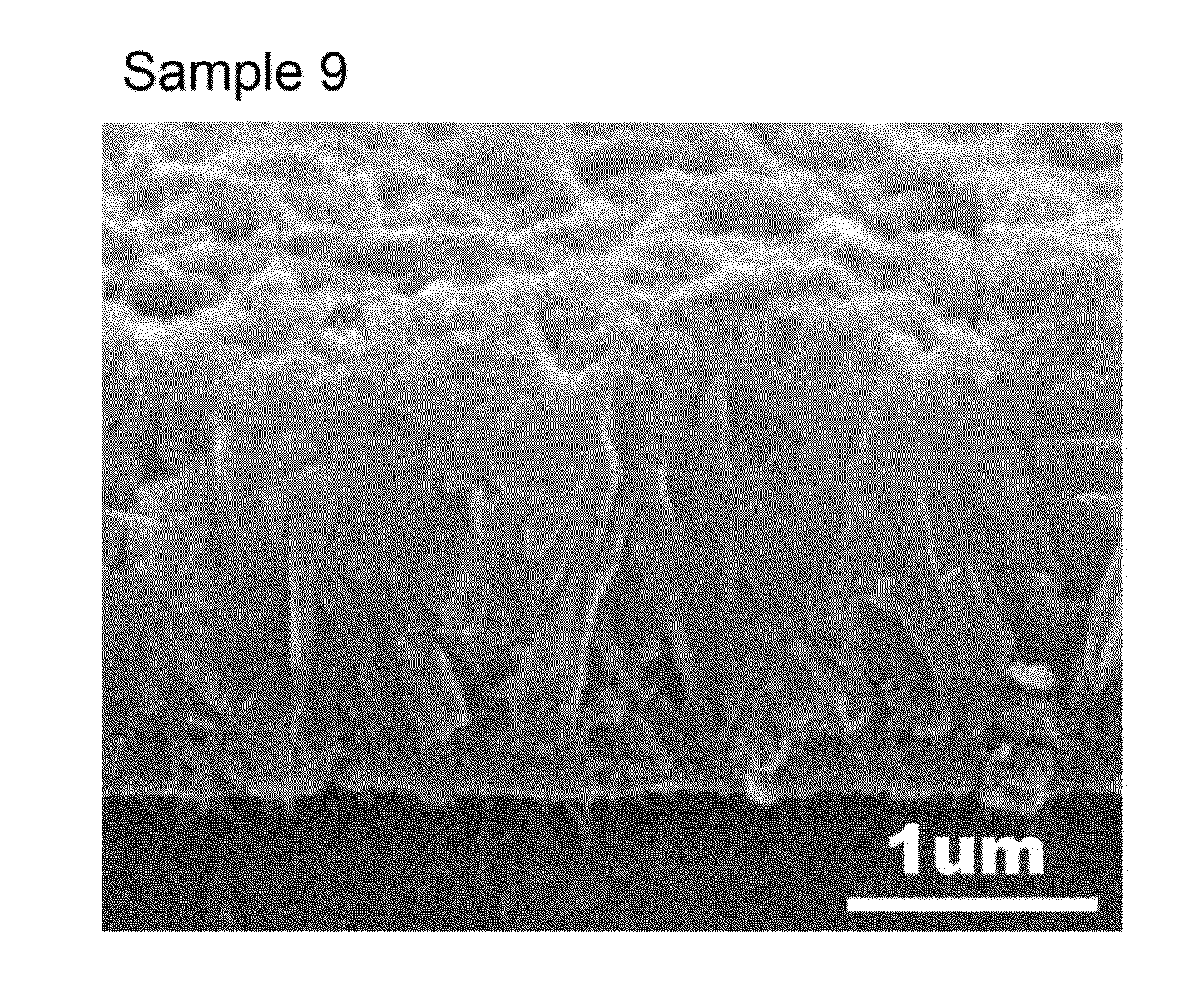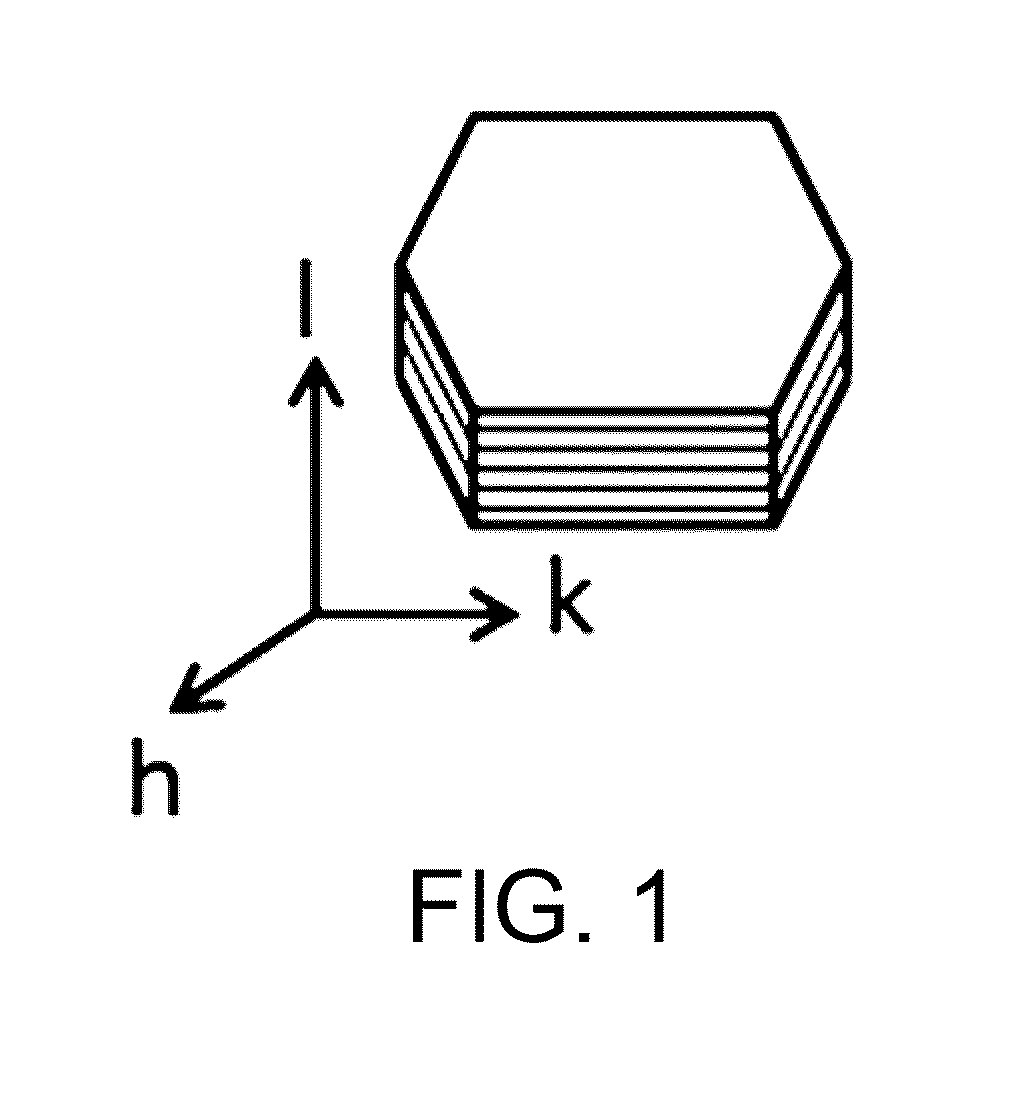Layered-double-hydroxide-oriented film and method for producing same
a technology of oriented membranes and hydroxide, which is applied in the preparation of alkaline-earth metal aluminates/aluminium-oxide/aluminium-hydroxide, non-aqueous electrolyte cells, etc., can solve the problems of insufficient orientation and density of oriented ldh membranes disclosed in patent documents 1 and 2 and non-patent documents 1 and 2 to achieve the effect of reducing resistance and high conductivity
- Summary
- Abstract
- Description
- Claims
- Application Information
AI Technical Summary
Benefits of technology
Problems solved by technology
Method used
Image
Examples
example 1
Production of Layered Double Hydroxide Oriented Membrane
[0051](1) Sulfonation Treatment of Substrate
[0052]A polystyrene plate having a size of 26.5 mm×30.0 mm×1.85 mm was provided as an aromatic polymer substrate, the surface of which was capable of being sulfonated. The surface of this polystyrene plate was wiped with ethanol for washing. This polystyrene plate was immersed in commercially available concentrated sulfuric acid (manufactured by Kanto Chemical Co., Inc., concentration: 95.0 mass % or higher) in a closed vessel at room temperature. After a lapse of the immersion time shown in Table 1, the polystyrene plate was removed from the concentrated sulfuric acid and washed with ion exchanged water. The washed polystyrene plate was dried at 40° C. for 6 hours, and thus a surface-sulfonated polystyrene plate was obtained to be used as a substrate for preparing Samples 1 to 17. Moreover, a polystyrene plate on which the above sulfonation treatment was not performed was also provid...
example 2
Evaluation of Orientation
[0058]The crystal phases of the samples of Samples 1 to 18 were measured with an X-ray diffractometer (D8 ADVANCE, manufactured by Bulker AXS) under measurement conditions of a voltage: 40 kV, a current value: 40 mA, and a measurement range: 5 to 70°. The resulting XRD profiles were identified using the diffraction peak of a layered double hydroxide (hydrotalcite compound) as provided in JCPDS Card No. 35-0964. As a result, it was confirmed that Samples 1 to 17 were all layered double hydroxides (hydrotalcite compounds).
[0059]Next, based on the resulting XRD profiles, the extent of crystal orientation in the LDH membranes were evaluated. For convenience of description, the XRD profile obtained with respect to the crystal phase of Sample 9 from which the highest membrane density was obtained is shown in FIG. 3. The profile shown at the top in FIG. 3 corresponds to the crystal phase of the polystyrene substrate, the profile shown in the middle corresponds to t...
example 3
Observation of Microstructure
[0065]The surface microstructures of Samples 1 to 6, 9 to 16, and 18 were observed using a scanning electron microscope (SEM, JSM-6610LV, manufactured by JEOL) at an accelerating voltage of 10 to 20 kV. The resulting SEM images (secondary electron images) of the surface microstructures of Samples 1 to 6, 9 to 16, and 18 are shown in FIGS. 4 to 6. According to the images shown in these figures, the sample with smallest voids (i.e., with the highest density) was Sample 9. Comparative Sample 18 did not have a membrane form.
[0066]The cross-sectional microstructure of Sample 9 was observed in the following manner. First, the microstructure of the cross-section that had been fractured (hereinafter referred to as a fractured cross-section) of Sample 9 was observed using a scanning electron microscope (SEM, JSM-6610LV, manufactured by JEOL) at an accelerating voltage of 10 to 20 kV. FIG. 7 shows the SEM image of the microstructure of the fractured cross-section ...
PUM
 Login to View More
Login to View More Abstract
Description
Claims
Application Information
 Login to View More
Login to View More - R&D
- Intellectual Property
- Life Sciences
- Materials
- Tech Scout
- Unparalleled Data Quality
- Higher Quality Content
- 60% Fewer Hallucinations
Browse by: Latest US Patents, China's latest patents, Technical Efficacy Thesaurus, Application Domain, Technology Topic, Popular Technical Reports.
© 2025 PatSnap. All rights reserved.Legal|Privacy policy|Modern Slavery Act Transparency Statement|Sitemap|About US| Contact US: help@patsnap.com



